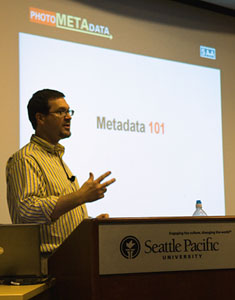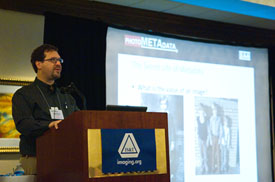
Do the social media websites or other image sharing services you use preserve your embedded photo metadata after upload? The members of the Controlled Vocabulary forum are attempting to answer that question by conducting a survey of the various services to find out.
Most readers of this blog know what we mean when we talk about photo metadata, such as the photographers name, copyright notice, captions, and keywords that can be embedded into image files. It takes effort and time to add this to each digital file, but does provide a way for those wishing to use the file to contact the owner, or know what is going on in the image.
It seems hard to imagine that simply by uploading an image to a website that all this work could be undone. However, from reviewing the preliminary results of the survey it appears that many services are doing just that.
If you don't find your favorite service in the list of preliminary results, there are instructions on the Controlled Vocabulary Survey regarding the Preservation of Photo Metadata by Social Media Websites web page if you want to help out with the survey. You can download the testbed file seen here, and use it, or test with your own images. Full instructions on using a simple online tool to view the metadata after upload are included. What you should be seeing in the image is something that includes IPTC, XMP, and Exif metadata as in the testbed image on the site. However the image that was uploaded to the Blogspot platform to accompany this post has had all of it's metadata removed.
It appears that even Google has left room for improvement.







